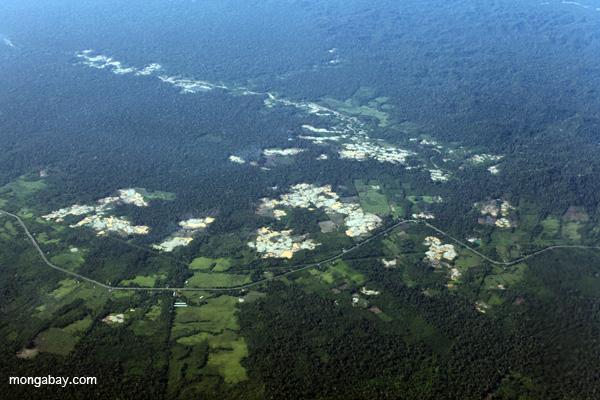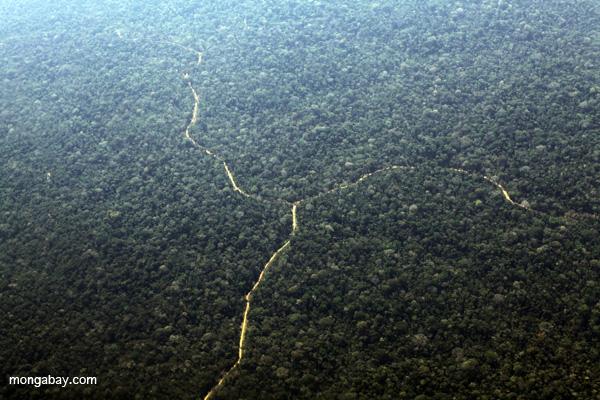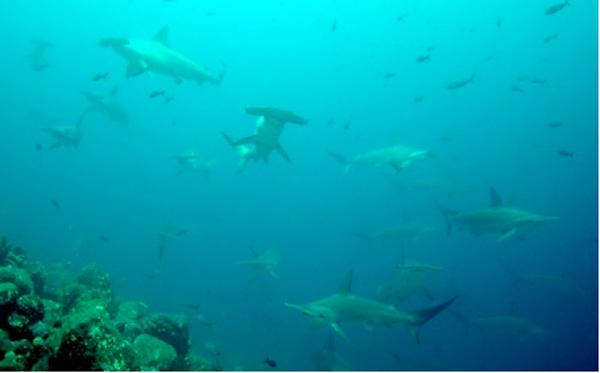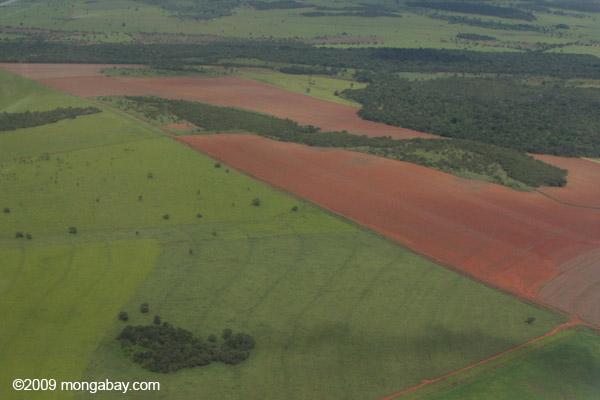It was 2009 when I first laid eyes on the 2,500 kilometer-long Interoceanic Highway that connects the west coast of Peru with the western Brazilian border—bisecting the entirety of the Peruvian Amazon. Far from impressive, it resembled a scraggly dirt and gravel path, blanketed on both sides by massive Amazonian trees. Traveling on the highway by car was an exercise in sheer luck. Huge clouds of dust rose high into the sky around my car and visibility was less than 10 meters (30 feet)—neither of which seemed to slow my driver down. Despite the windows being up, I coughed and gasped for the 1.5 hours of my journey from Puerto Maldonado to Laberinto, thinking dark thoughts about road builders everywhere.
Over the next five years, I would make that trip anywhere from four to six times a year, in both directions, and conditions improved greatly. The road widened, was paved, the risk of asphyxia was no longer imminent. But a great many other, curious changes had also gradually occurred.
As the road improved, so did visibility. The trees crept further and further away, and you could see for miles. Farms developed, little towns got their own names and sign boards. Now the trip took only 45 minutes. Brazil could transfer Amazonian produce much faster by exporting west through Peruvian ports, much closer to production sites than the eastern Atlantic coast of Brazil. Global Forest Watch, a subsidiary of the World Resources Institute, monitors land use via satellite imagery across the planet and reports over 67,000 hectares of deforestation in the region around Puerto Maldonado.
While this economic boom and upgraded infrastructure project progressed, a more chilling undertone was never too far away. As the forest on either side was cut down, sold, bought, farmed and exploited, the wildlife responded to the highway as they have done to countless highways around the world—with innocence.
One day in 2012, my taxi driver swerved off the highway and almost crashed our car. He did it to avoid running over a snake whose thick, glistening body spanned the entire road. Neither its head, nor its tail, were visible. It was a green anaconda (Eunectes murinus), the largest snake in the Amazon rainforest.
The story of this road is like thousands of other stories all over the world. The Bengal tiger, the Amazonian jaguar, and the African forest elephant have suffered great reductions in numbers due to roads. Over 37 percent of 423 roadkills monitored monthly in a mere six-month period in southern India were reptiles. Amphibians experienced the next-highest mortality rate, followed by birds.
Last November, at the annual G-20 summit—for the 20 wealthiest of the world’s nations—in Brisbane, Australia, a staggering commitment was made to invest $60 to $70 trillion worldwide in new infrastructure over the next 15 years. This is akin to doubling the current value of all global infrastructure put together.
“The G20’s pledge would be the largest financial transaction in human history,” writes William Laurance, a Researcher and Australian Laureate at James Cook University in his article for The Conversation. “Unless these projects are managed carefully, their ecological consequences could be almost unthinkable.”
“By mid-century, it is expected that there will be 25 million kilometers of new paved roads globally--enough to encircle the Earth more than 600 times. Nine-tenths of these new roads will be in developing nations, which sustain many of the planet’s most biologically rich and environmentally important ecosystems,” Laurance and colleagues reported last week in an article in the journal Current Biology. They write that massive hydroelectric projects involving damming some of the world’s largest rivers have been planned for the Mekong region, the Congo basin and the Amazon basin.
Warning of the threats that new roads inevitably give rise to, the authors describe a set of stepwise recommendations in their report, providing scientists and environmental leaders with tools and a foundation with which to actively lobby leaders of the G-20 nations to reconsider this unprecedented commitment to infrastructure growth.
The very first recommendation is to avoid the first cut, since every road brings with it the potential for further subsidiary roads, thus exponentially increasing the area eventually modified. Even upgrading an existing road cannot be dismissed as irrelevant, because upgraded roads maintain access year-round, which increases traffic speeds and has wide-ranging impacts on the surrounding environment. The secondary effects of major infrastructure projects can be more severe than the project’s direct effects—for example, hydroelectric dams can alter environments, but they must also be maintained and that requires a network of roads and services.
Laurance strongly recommends “offshore projects,” which are defined as those requiring no road networks, such as the natural-gas project of Camisea in western Peru. Screening of projects for environmental impact must be conducted in conjunction with governments and global funders, not by governments alone who have often granted all permissions by the time proposals arrive for funding reviews.
Laurance also warns of the uncontrolled development of other kinds of infrastructure, such as mines. “If you want to see the wilds of Africa, don’t wait. Go today, because Africa is being transformed by a feeding frenzy of foreign mining investments,” he writes in his article in The Conversation. Indeed, Global Forest Watch shows large portions of the Democratic Republic of Congo, Gabon, and the Republic of Congo have been allotted for mining concessions. “It’s a bit of a tsunami,” Laurance said in a previous interview with mongabay.com
The eventual outcome of the G-20 decision remains to be seen, but hundreds of scientists are joining the conversation, and speaking out formally against the potential for harm through unmonitored development projects.
Citations:
- Clements, G. R., Lynam, A. J., Gaveau, D., Yap, W. L., Lhota, S., Goosem, M., et al. (2014). Where and How Are Roads Endangering Mammals in Southeast Asia’s Forests?. PloS one, 9(12), e115376.
- Hansen, M. C., P. V. Potapov, R. Moore, M. Hancher, S. A. Turubanova, A. Tyukavina, D. Thau, S. V. Stehman, S. J. Goetz, T. R. Loveland, A. Kommareddy, A. Egorov, L. Chini, C. O. Justice, and J. R. G. Townshend. 2013. “Hansen/UMD/Google/USGS/NASA Tree Cover Loss and Gain Area.” University of Maryland, Google, USGS, and NASA. Accessed through Global Forest Watch on March 13, 2015. www.globalforestwatch.org.
- Laurance, W. F., Peletier-Jellema, A., Geenen, B., Koster, H., Verweij, P., Van Dijck, P., ... & Van Kuijk, M. (2015). Reducing the global environmental impacts of rapid infrastructure expansion. Current Biology.
- Selvan, K. M., Sridharan, N., & John, S. (2012). Roadkill animals on national highways of Karnataka, India. Journal of Ecology and the Natural Environment,4(14), 362-364.
This article was written by Mrinalini Erkenswick Watsa, a correspondent writer for news.mongabay.com. This article has been republished with permission, original article here.



